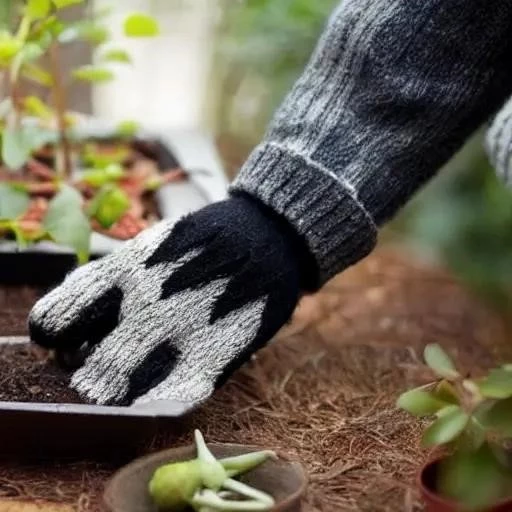
As the Southern Hemisphere embraces winter’s crisp embrace, many gardeners might be tempted to retreat indoors, believing their verdant havens must inevitably slumber. However, across Australia’s remarkably diverse landscapes, from the sun-drenched coasts to the frosty hinterlands, winter is far from a season of dormancy; it’s a dynamic period brimming with unparalleled opportunities. Forget the drab, barren images often associated with colder months; with the right strategic approach, your Australian garden can not only survive but truly thrive, laying robust foundations for an explosive spring display. This isn’t merely about maintenance; it’s about harnessing a powerful seasonal advantage.
Indeed, the cooler temperatures and often gentler sunlight provide an ideal canvas for a surprising array of tasks and plantings. By integrating insightful practices and a forward-thinking mindset, you can transform your winter garden into a productive and aesthetically pleasing spectacle. Leading horticulturalists consistently emphasize that proactive winter care is the secret weapon for cultivating resilient plants and an abundant harvest. It’s an investment, a thoughtful stewardship that pays dividends when the warmer days arrive, ensuring your green space remains a source of joy and nourishment all year round.
| Category | Key Information |
|---|---|
| Australian Climate Zones | Australia’s vastness means winter conditions vary significantly. Key zones include Tropical (warm, dry winter), Subtropical (mild winter), Temperate (cool, wet winter), and Arid/Semi-Arid (cold nights, mild days). Tailoring tips to your specific zone is crucial for success. |
| Recommended Winter Crops | Many vegetables flourish in cooler weather: Broccoli, Cabbage, Cauliflower, Carrots, Leeks, Peas, Spinach, Kale, Broad Beans, and various Lettuce varieties. Citrus fruits also ripen beautifully during winter. |
| Essential Winter Gardening Tasks | Pruning deciduous plants, enriching soil with compost and organic matter, mulching garden beds for insulation, planting winter-flowering bulbs and natives, protecting frost-sensitive plants, and maintaining tools. |
| Benefits of Winter Gardening | Ensures healthier, more vigorous plants for spring; provides fresh, seasonal produce; maintains soil vitality; reduces pest pressure; and offers continuous mental and physical well-being benefits. |
| Official Reference | ABC Gardening Australia |
One of the most impactful strategies for a flourishing winter garden involves meticulous soil care. By thoroughly clearing away dying plants and enriching your beds with a generous layer of nutrient-dense compost and organic matter, you are not just preparing for future growth, but actively fostering a vibrant underground ecosystem. This foundational work, often overlooked in the rush of warmer seasons, allows beneficial microbes to flourish, ensuring your soil remains fertile and well-structured, ready to nourish new plantings with incredible efficiency. Expert gardeners, like those frequently featured on “Gardening Australia,” consistently advocate for this deep soil conditioning as the bedrock of any successful garden, transforming seemingly barren winter earth into a powerhouse of potential.
Equally vital is the strategic application of mulch. Far more than just an aesthetic covering, a thick blanket of organic mulch—be it sugarcane, straw, or wood chips—acts as an incredibly effective insulator. It meticulously regulates soil temperature, protecting delicate root systems from the biting cold, while simultaneously conserving precious moisture and suppressing unwelcome weeds. This thoughtful addition reduces the need for frequent watering, a particularly valuable benefit during drier winter spells, and gradually breaks down, further enhancing soil fertility. It’s a simple yet remarkably effective trick that seasoned gardeners employ to keep their beds healthy and vibrant, ensuring a stable environment for emerging life.
Winter also presents a prime opportunity for thoughtful pruning. Deciduous trees and shrubs, having shed their leaves, reveal their underlying structure, making it the perfect time to give them a “fresh haircut.” Removing dead, diseased, or crossing branches not only improves air circulation and light penetration but also stimulates vigorous new growth come spring. For roses, a judicious winter prune can result in an explosion of blooms later in the year. Furthermore, assessing your garden’s framework during this quieter period allows for structural adjustments, ensuring your landscape design truly shines when the garden bursts back to life. This proactive shaping is an art form, meticulously practiced by those striving for horticultural excellence.
And who said winter means no fresh produce? Australia’s diverse climates allow for a surprising bounty of frost-tolerant vegetables. Imagine harvesting crisp broccoli, succulent cabbage, sweet carrots, and robust leeks directly from your garden, even as the mercury dips. Alongside these culinary staples, winter is an ideal time for planting spring-flowering bulbs like daffodils, freesias, and hyacinths, promising a spectacular riot of color to banish the last vestiges of cold. Additionally, many Australian native plants, such as certain grevilleas and banksias, defiantly burst into flower during winter, providing vital nectar for local wildlife and a stunning display of natural resilience, enriching your garden’s biodiversity.
Protecting vulnerable plants from unexpected frosts is another critical aspect of successful winter gardening. Simple strategies, from covering delicate specimens with frost cloths or old sheets on cold nights to positioning them in sheltered spots, can make a significant difference. For container plants, grouping them together or moving them under eaves offers added protection. By integrating these preventative measures, you are actively safeguarding your investment and ensuring continuity of growth. Furthermore, maintaining your gardening tools—cleaning, sharpening, and oiling them—during these months not only extends their lifespan but also ensures they are primed and ready for the intensive demands of the spring season, embodying a truly professional approach to garden care.
